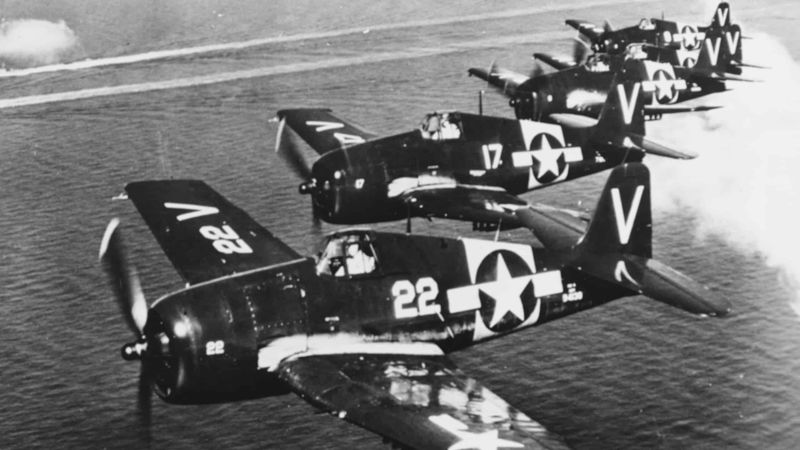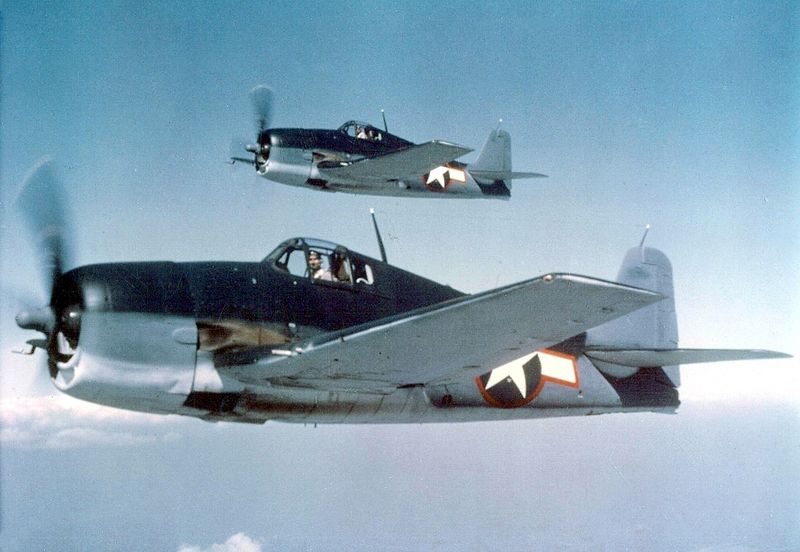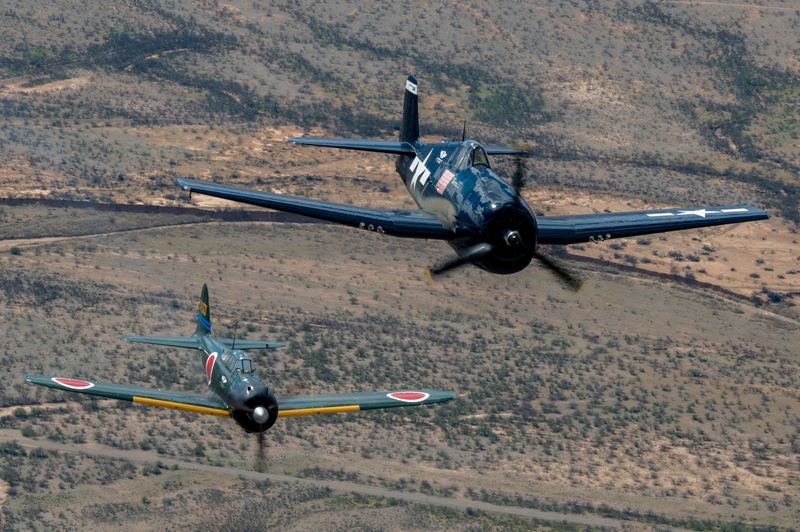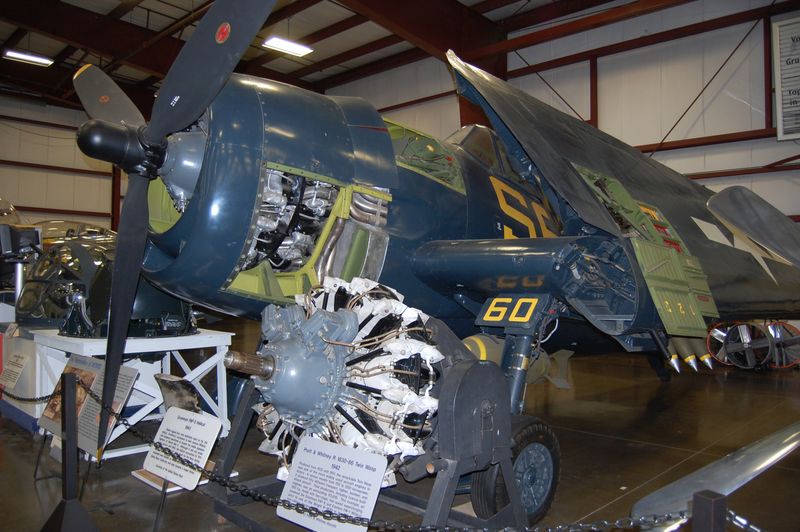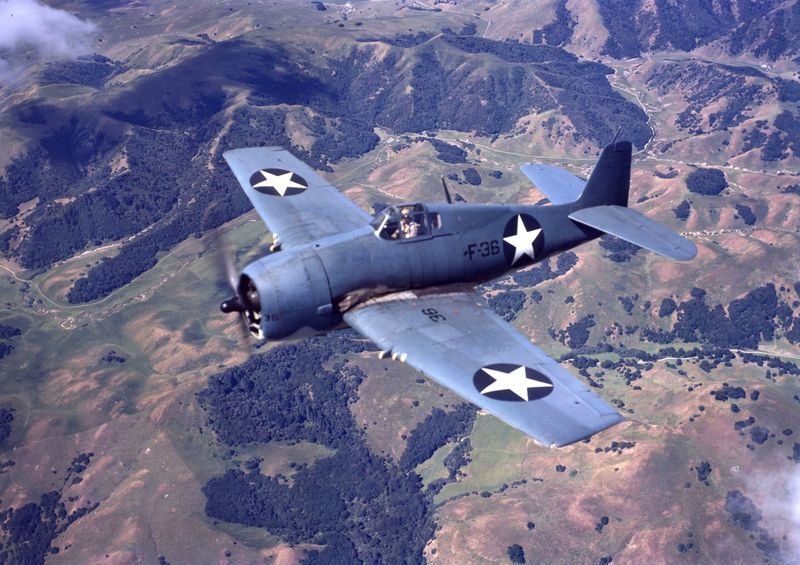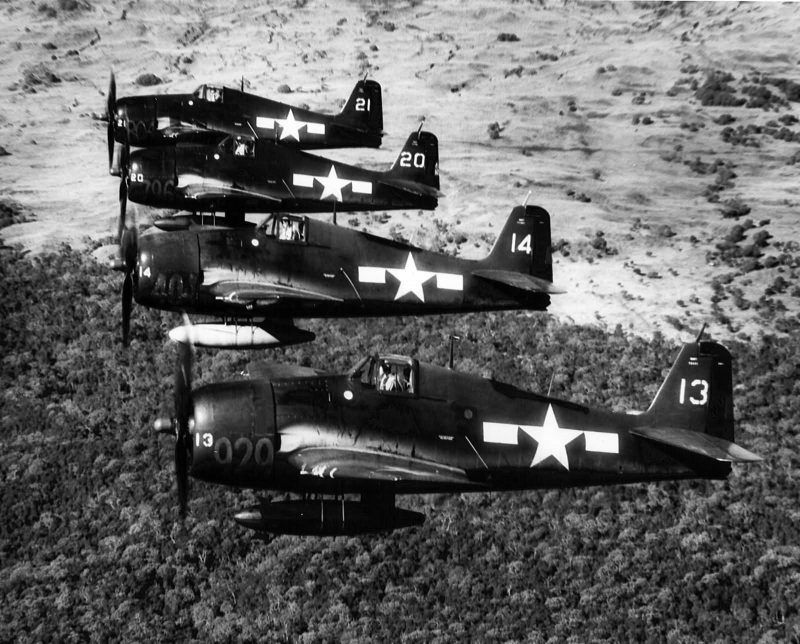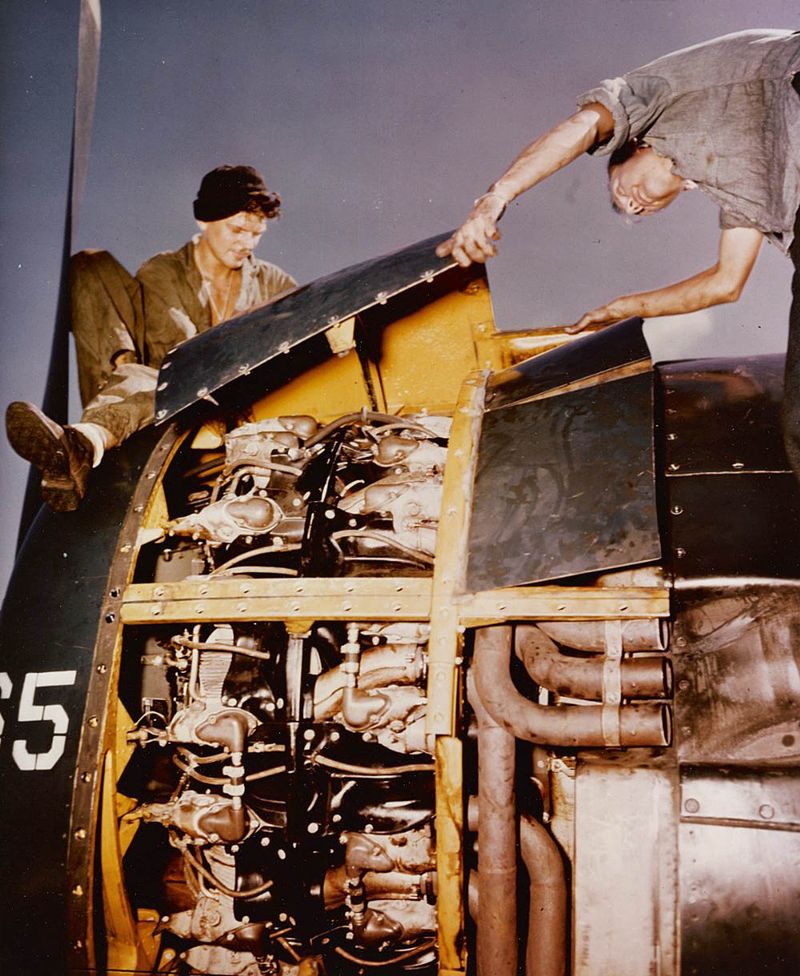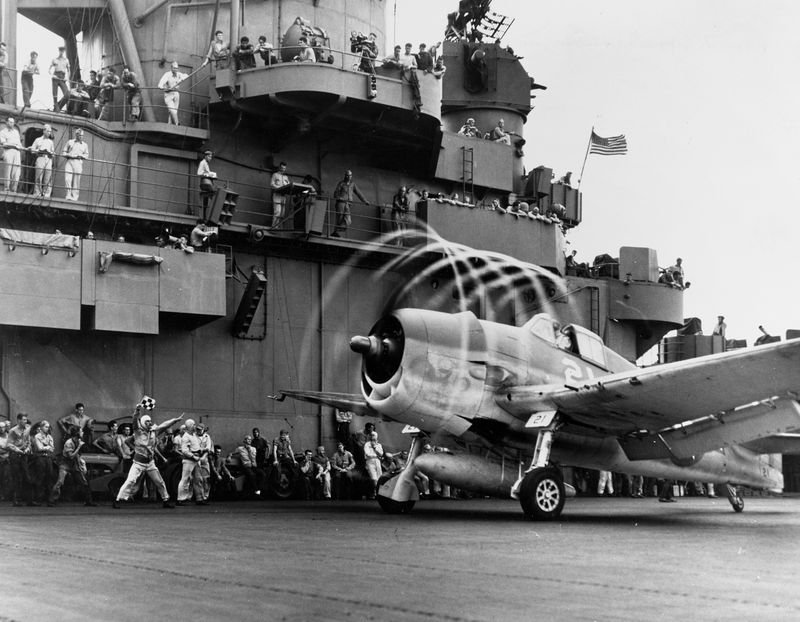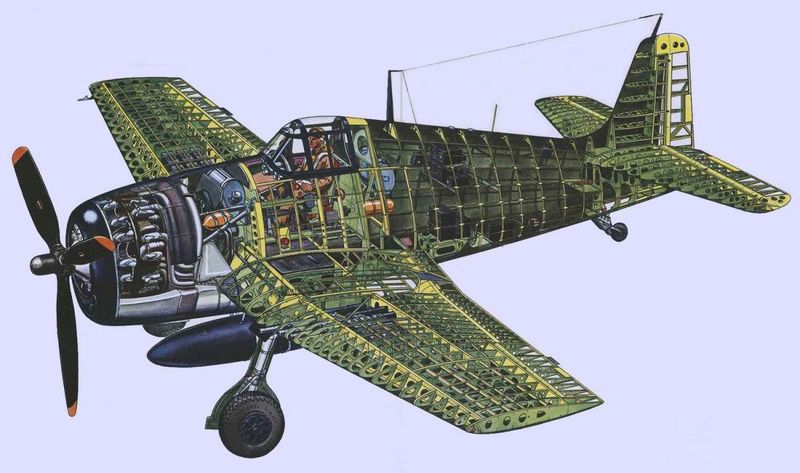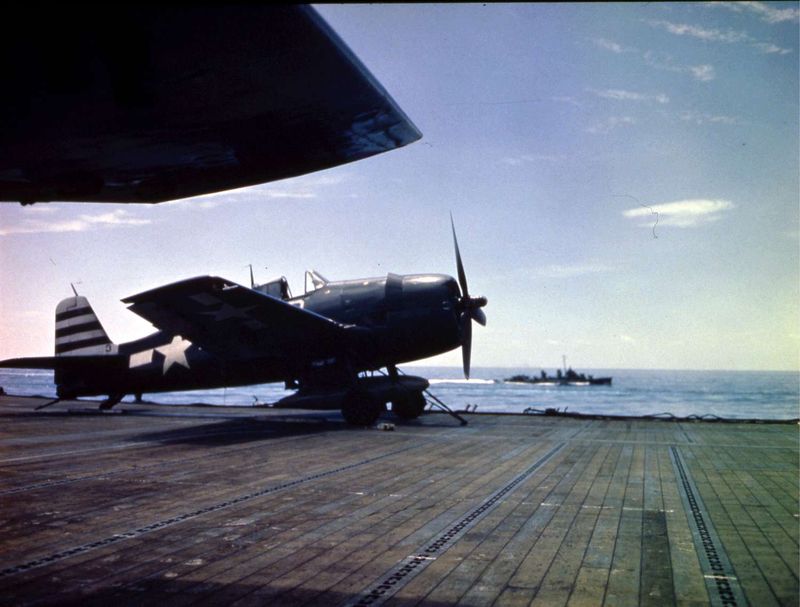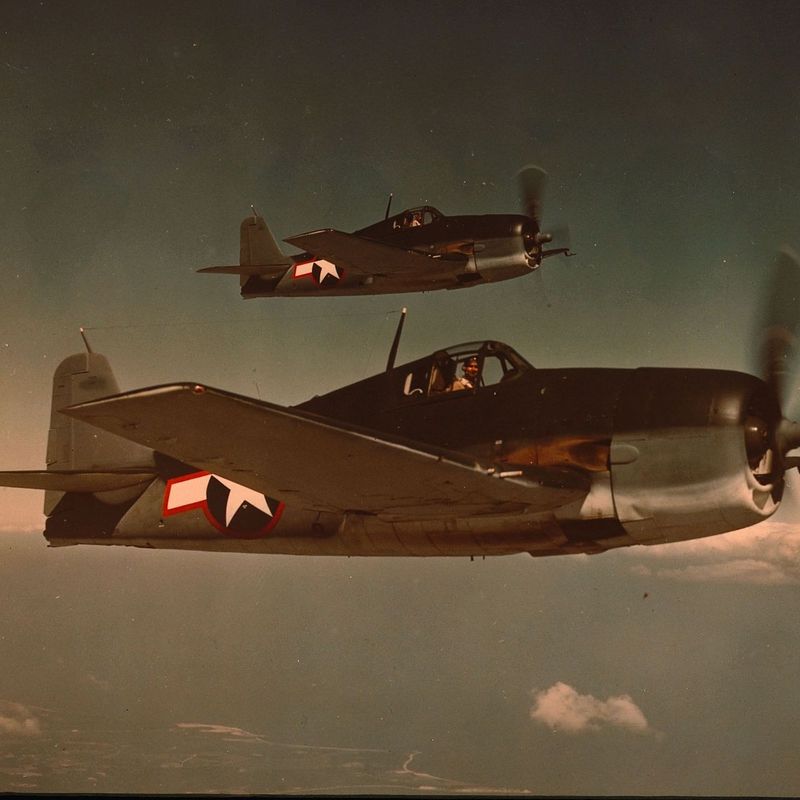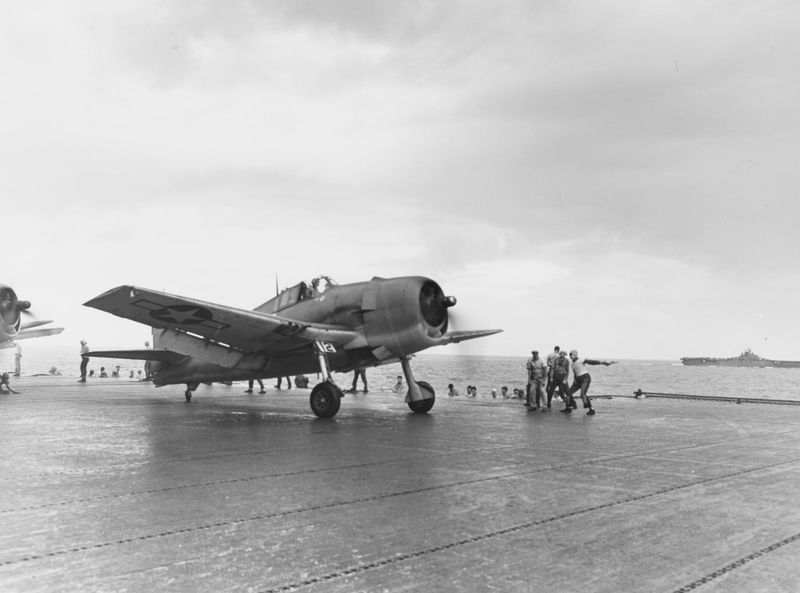The F6F Hellcat, a dominant force during World War II, outclassed the Japanese Zero in numerous significant ways. With superior firepower, armor, and technology, the Hellcat played a crucial role in establishing air superiority for the Allies. This list explores thirteen key advantages that made the F6F Hellcat the Zero’s nemesis, changing the air combat landscape forever.
1. Overwhelming Firepower
The F6F Hellcat boasted an impressive arsenal with six .50-caliber machine guns, delivering a total of 1,400 rounds. In comparison, the Japanese Zero was equipped with only two 20mm cannons and two 7.7mm machine guns, often plagued by limited ammunition reserves. This disparity in firepower meant Hellcats could unleash a barrage of bullets, shredding enemy aircraft in mere seconds. With the ability to maintain such an aggressive rate of fire, Hellcat pilots gained a significant edge during dogfights, often outgunning their adversaries and securing air dominance.
2. Superior Armor & Durability
The Hellcat was renowned for its robust construction, featuring pilot armor and self-sealing fuel tanks. Unlike the Zero, which sacrificed safety features for agility, the Hellcat could withstand enemy fire and remain airborne. This resilience allowed Allied pilots to return safely even after sustaining damage. The Zero’s vulnerability often resulted in catastrophic failures, as a few well-placed rounds could set it ablaze. The Hellcat’s design prioritized pilot survival and mission success, shifting the balance in favor of the Allied forces.
3. Faster Dive Speed
The Hellcat’s ability to dive at over 400 mph without suffering structural failure was a tactical advantage unmatched by the Zero. The Japanese fighter often experienced catastrophic wing failures during high-speed dives. This capability enabled Hellcat pilots to either escape from or pursue adversaries effectively. By maintaining structural integrity at high speeds, the Hellcat provided pilots with the flexibility to navigate combat scenarios with confidence, exploiting the Zero’s weaknesses to gain tactical superiority.
4. More Powerful Engine
Equipped with the Pratt & Whitney R-2800 engine generating 2,000 horsepower, the Hellcat far surpassed the Zero’s Nakajima Sakae engine with just 1,130 hp. This power boost translated into superior climbing, speed, and energy retention. The Hellcat could reach combat altitudes swiftly, maintain momentum during engagements, and execute rapid maneuvers. This engine performance not only enhanced the Hellcat’s operational capabilities but also gave its pilots the upper hand in high-stakes aerial battles, where every advantage counted.
5. Better High-Altitude Performance
Optimized for high-altitude combat, the Hellcat excelled at engagements above 20,000 feet, where the Zero’s performance waned significantly above 15,000 feet. This advantage allowed Hellcat pilots to dictate the terms of battle, engaging or disengaging at will. The Zero’s struggle in thinner air made it vulnerable, giving the Hellcat a distinct edge in vertical engagements. Mastery of high-altitude combat zones ensured that the Hellcat maintained air superiority across varied altitudinal landscapes.
6. Superior Roll Rate
The Hellcat’s design allowed for a faster roll rate, giving pilots the ability to execute quick, evasive maneuvers. This agility was particularly advantageous in rolling scissors, a maneuver where speed and roll rate determined success. In contrast, the Zero struggled with slower aileron response at high speeds, making it less adaptable during intense dogfights. The Hellcat’s enhanced roll capabilities ensured that pilots could outmaneuver opponents, turning potential disadvantages into tactical victories.
7. Devastating Kill Ratio
The Hellcat achieved an extraordinary kill ratio of 19:1, with over 5,200 enemy aircraft downed during World War II. This statistic alone highlights its effectiveness and reliability in combat. The Zero, which dominated early in the war, quickly became obsolete as the Hellcat ascended. This shift not only reflected technological superiority but also strategic prowess. As Hellcats shot down more Zeros than any other Allied fighter, their impact on the Pacific theater was undeniably transformative, reshaping air combat dynamics.
8. Easier to Fly & Maintain
The Hellcat was engineered for simplicity in both piloting and maintenance. Its design accommodated quick pilot training, crucial for scaling operations during wartime. Meanwhile, the Zero required highly skilled pilots, which Japan struggled to replace as losses mounted. This difference enabled the U.S. to rapidly produce and deploy effective pilots and aircraft. The Hellcat’s operational ease translated into sustained air superiority, as it could be efficiently serviced and returned to battle, unlike its more demanding counterpart.
9. Better Weight Distribution
Despite being heavier, the Hellcat’s weight was strategically distributed for stability, enhancing control during dogfights. The Zero, on the other hand, was too light, leading to potential instability. This stability allowed Hellcat pilots to perform precision maneuvers with greater confidence, turning aerial engagements to their advantage. By achieving an optimal balance, the Hellcat’s design empowered pilots with a reliable platform that responded predictably in combat, further cementing its status as a formidable fighter.
10. Protected Fuel System
The Hellcat’s fuel system incorporated self-sealing tanks and an inert gas system, significantly reducing the risk of fires during combat. In contrast, the Zero’s lack of protection led to disastrous consequences, with fuel leaks turning them into flying infernos after enemy hits. This safety feature not only preserved the aircraft but also ensured pilot survival, fostering confidence in battle. By minimizing fire hazards, the Hellcat offered a safer combat experience, aligning with its design philosophy of pilot protection and mission success.
11. Advanced Radar Integration (Later Models)
Some variants of the Hellcat were fitted with radar systems for night fighting, a critical advancement during World War II. This capability enabled pilots to hunt and engage Japanese aircraft in low visibility, where the Zero lacked any comparable technology. The incorporation of radar extended the Hellcat’s operational envelope, allowing for 24-hour missions with increased effectiveness. By leveraging technology, the Hellcat maintained its edge, proving adaptable to evolving combat scenarios and extending its superiority into nighttime engagements.
12. Psychological Impact
The psychological effect of the Hellcat on Japanese pilots was profound. Known as the “Zero Killer,” it instilled fear and respect, leading many adversaries to avoid direct confrontations. Once feared, the Zero found itself outclassed and overshadowed by the Hellcat’s prowess. This shift in morale influenced battle outcomes, as confidence among Hellcat pilots soared, while Japanese forces grappled with doubt. The Hellcat’s reputation in the skies played a pivotal role in undermining enemy morale and altering the psychological landscape of aerial warfare.
13. The “Zero Killer” Legacy
The Hellcat earned its “Zero Killer” moniker through undeniable performance and legacy. Ace pilots like David McCampbell, who achieved 34 kills, thrived in it, cementing its place in history. By 1944, the Zero was no match for the Hellcat, which symbolized Allied victory in the Pacific. This legacy underscores the Hellcat’s role in ending Zero dominance, shaping post-war air tactics and aircraft design. The Hellcat not only changed the course of the war but also left an indelible mark on aviation history, embodying innovation and prowess.

